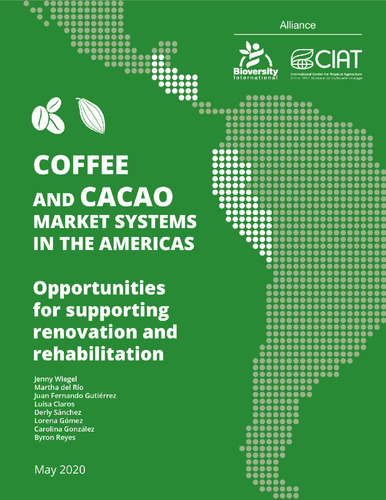Coffee and Cacao Market Systems in the Americas: Opportunities for Supporting Renovation and Rehabilitation
The Maximizing Opportunities in Coffee and Cacao in the Americas (MOCCA) project is a five-year initiative funded by the United States Department of Agriculture (USDA) and implemented by a consortium led by TechnoServe, in collaboration with Lutheran World Relief, the Initiative for Smallholder Finance, and World Coffee Research. This regional initiative will apply a market systems approach to improve the livelihoods of 120,000 farmers in the coffee and cocoa sectors in Ecuador, El Salvador, Guatemala, Honduras, Nicaragua and Peru (henceforth MOCCA countries) through increased productivity and trade. Given the complexity of MOCCA’s design, the impact evaluation will evaluate outcomes at two levels - 1) at the market system level to assess changes in the behavior of key market system actors and 2) at the farmer level to assess changes in the benefits provided to farmers within the market system. This report describes the results of the first part of the baseline evaluation, at the market systems level, which will be used by the MOCCA team to inform the Program's strategy. This assessment used qualitative methods, including semi-structured interviews and focus groups with actors from different positions within the sector in order to build a robust image of how each system is currently functioning at the national level. The focus was on identifying current actors and understanding their current behavior within the system vis-a-vis other actors, and vis-a-vis farmers. Following MOCCA’s Theory of Change, we focused on behaviors related to provision of services to farmers including technical assistance, genetic material, finance and research, with particular emphasis on these services as they relate to rehabilitation and renovation (R&R). Three hundred different actors were engaged as informants across the eleven sectors studied (5 countries for coffee, 6 countries for cacao). Data was collected during April to June 2019. The report contains country snapshots of the coffee and cacao market systems in each country as well as a comparative section that takes a more regional perspective.

